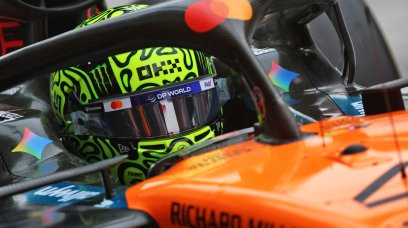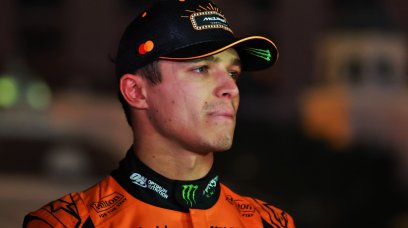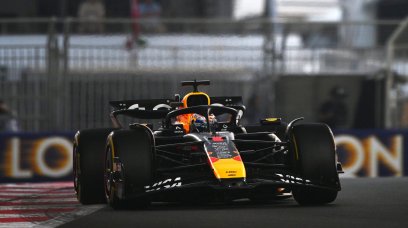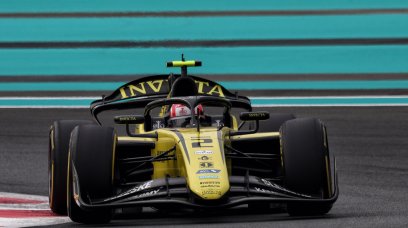The main topic of this year's Spanish Grand Prix is the introduction of new front wing flexibility limits, announced by the FIA in January, in combination with the rear wing tests already effective since Melbourne.
The vertical loads applied to the individual elements of the wing has not been increased, remaining at 1000N (Newtons of force) for the main profile and 60N for the trailing edge of the upper flap, but the bending limits through the main profile have been modified.
A reduction of 5mm from 15mm to 10mm has been added when load is applied symmetrically 80cm from the centreline of the car, and from 5mm to 3mm when the load is applied at any point of the trailing edge of the upper flap.
Opinions within the paddock over the effectiveness of the changes are varied and range from the likes of Fred Vasseur, who believes it will be a "game-changer", to Andrea Stella, who maintains that the changes in terms of performance will be minimal.
And it is quite easy to understand the substantial difference in opinion from the two team principals.
The potential impact of FIA flexi-wing changes
Ferrari has largely struggled to master the flexible front-wings, with its first version being introduced at last season's Singapore GP, but used in anger for the first time in the United States.
Meanwhile, McLaren, conversely, has been the team which best played its hand with flexi-wings.
However, it is important to stress that this does not automatically mean that it will pay the highest price in terms of performance lost by the new rules.
Rather, several factors will be at play, such as the ability to reproduce the same air-flow management, albeit with less wing flexing to aid in this.
The deflection of the front wing will not affect just drag and top speed, but also aerodynamic balance.
Due to the increased stiffness, the flaps will keep a higher incidence in high-speed corners, shifting the balance forward and possibly inducing rear-end instability, hence, the change will impact each car in a different manner.
Drivers who like to cope with oversteer might adapt better, like Max Verstappen and Charles Leclerc, and teams like Mercedes and McLaren could benefit from that, as their cars have shown good stability on the rear axle.
Overall, it appears unlikely that a definitive shift in the current performance values of each car will take place, but it is not impossible.
Also interesting:
Join RacingNews365's Ian Parkes, Sam Coop and Nick Golding, as they look back on Monaco and look ahead to the Spanish Grand Prix! The new mandatory two-stop rule is a major talking point, as is Lando Norris' bounce back and the technical directive for Barcelona.
Rather watch the podcast? Then click here!
Don't miss out on any of the Formula 1 action thanks to this handy 2026 F1 calendar that can be easily loaded into your smartphone or PC.
Download the calenderMost read
In this article





















Join the conversation!